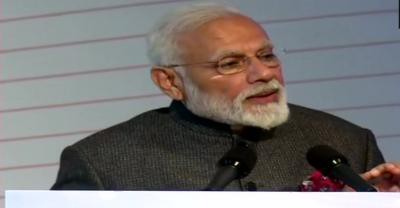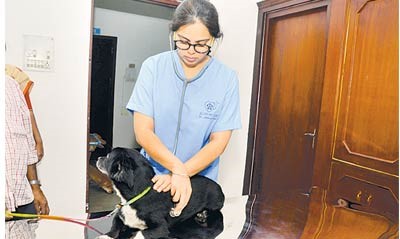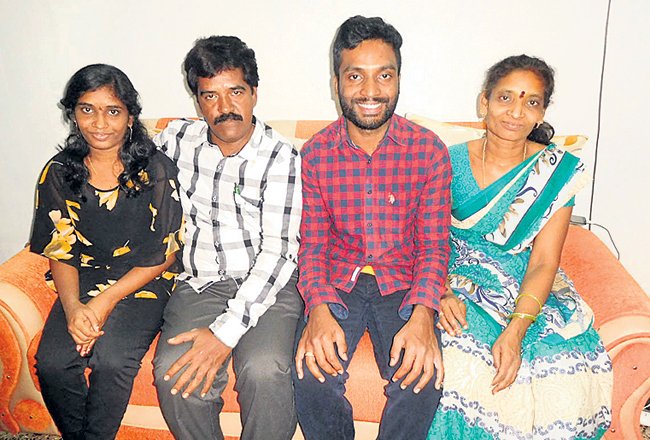No Results Found
The page you requested could not be found. Try refining your search, or use the navigation above to locate the post.
No Results Found
The page you requested could not be found. Try refining your search, or use the navigation above to locate the post.
Millenials Benchmark Business Travel With Success
Almost 60 per cent of the people between 19-34 years of age consider business travel a status symbol and also an upward movement in life, reports the OnRoute survey by technology-driven budget hotel franchise brand FabHotels.
“OnRoute – the Business Edition” is FabHotels’ first consumer survey which highlights that millennials today benchmark business travel with success.
As many as 92 per cent of millennials nowadays eagerly look forward to their next business trip making it the most coveted business perk while 46 per cent business travellers spend their leisure time during business trips in exploring the destination, said a statement.
As per the survey, in the past six months, 4 out of every 10 respondents have travelled more than five times on a business trip. Also, slightly more than 45 per cent respondents travelled to meet their teams in other cities, while around 42 per cent travelled to sign up new business.
The pan-India survey saw the participation of 5000 plus respondents who are frequent business travellers. The cities that participated were Delhi/NCR, Bengaluru, Hyderabad, Mumbai, Pune and Chennai.
Some of the respondents were also from Goa, Ahmedabad, Kerala, Chandigarh, Raipur, Bijnor, Meerut, Jammu, Lucknow, Cochin, Vadodara, Nasik.
Business trips are also apparently a great opportunity to catch up with some ‘me’ time. More than 45 per cent respondents like to carry their favourite books while on the go while 22 per cent carry their work-out gear with them while travelling.
Infact 33 per cent of the respondents also said that they would like to meet someone romantically on a business trip.
Commenting on the survey findings, Vaibhav Aggarwal, Founder and CEO, FabHotels said, “We are thrilled to have received a great response with users participating across tier 1 and 2 cities. The OnRoute findings reveal the changing psyche of Millennial travellers who are open, social and love to travel.”
Hamburg — straddling the dichotomies of being rich and being woke
The first time I visited Hamburg, the city gave me too much fodder for weather-talk. I even learnt the phrase Schmuddelwetter, dedicated to the entire region of North Germany. The somewhat untranslatable phrase simply means damp, hence wet and muddy weather, and it’s intended as an insult to the city’s perpetually, and unpredictable, drizzling skies and whooshing cold winds.
On the same trip, I also went looking for the pubs in which the once-smalltime band called The Beatles played in the 1960s. (Unfortunately, not many pubs were preserved as cultural relics and have gone out of business since.) More seriously, I was on a fellowship to the media capital of Germany that took me on a tour of the offices of the city’s renowned magazines and television studios.
The second time, I was in the city on a rather hipster-ish pursuit — to attend an indie magazine workshop. And so, in the erstwhile warehouses of the port city, now refurbished as artsy workspaces, bleached blonde youngsters in their 20s, in geeky glasses, man (and woman) buns and beards meddled with their computer screens over bottles of mineral wassermit gas (sparkling water, if you will) on how to create an indie magazine in five days. Over and above creating a print magazine, this year the idea is also to create an augmented reality magazine, the world’s first, and the former freight train warehouse area of Oberhafen will play host to it.
They want to push the boundaries of publishing by exploring alternative ways. By the end of the workshop, “Oberhafen could become the first prototype edition of an augmented reality magazine,” the brochure speculated. It bears mention that the offices of Germany’s unequivocally popular weekly magazine Der Spiegel sitnot too far from Oberhafen itself. Staunchly old-school with falling subscription that boasted of a million subscribers once, Spiegel’s transition to digital has been reluctant and recent. But those are the contrasts Hamburg is used to.
“Hamburg has a strong bourgeoisie and an even stronger alternative scene (as you have seen during the violent G20 riots). But the city is also divided — on one hand, it’s very affluent with the old money earned from trading, shipping etc, while on the other, some quarters are extremely poor,” Martin, a bespectacled bicycle rider, who works in the city’s administrative offices told me.
With waterfront facing row houses and fancy Porsches in their front yards, the quarters in the west Blankenese and Nienstedten are extremely rich. As your S-bahn train moves east, graffiti dominates the walls of public housing and doner kebab stalls outnumber hipster cafés in neighbourhoods like Jenfeld and Billbrook, signalling economic inequality.
Hamburg straddles the dichotomies of being rich and being woke rather splendidly. When the nationwide anti-racism protests were held all over Germany — following the right-wing uprising in the east German city of Chemnitz that refused to die down — young Hamburgers came out in large numbers flashing orange banners that read ‘refugees welcome’. Now there are plays in Hamburg’s theatres whose central theme is, ‘theatre against right extremism.’ Speaking of which, the city’s most recent landmark, its flashy concert hall on the banks of the Elbe river called Elbphilharmonie opened a year ago after overshooting the budget and timelines by years.
Swaying east
But delays in public projects and anti-racism protests notwithstanding, business is, otherwise, as usual in Europe’s second-busiest port city. Even as the Tweeter-in-Chief increasingly alienates Europe and China by fuelling and refuelling the trade war, dismantling global trade relations, Hamburg has been quietly swaying east and courting China and India on its own. A decade old event called China Time, “presents Hamburg as an ideal location for an interaction with China to a broad audience,” according to its website. In the same vein, the yearly India Week event, attracted more than 30,000 visitors in 2015.
Back in my workshop — no rains this time, thanks in no small part to the unusual heat wave battering Germany — I pitch the idea of the rich-poor divide in Hamburg to the magazine we’re producing. With too little time to research and produce, the story didn’t get picked up. Which is just as well, because instead, I’m handed a story on how vipassana expands your mind. It’s perhaps the most obvious (and stereotypical) assumption to make that an Indian in an all-Caucasian crowd has some kind of vipassana experience but I’m happy to put on record that I volunteered to do it.
Rich-poor divide, housing crunch, gentrification — the same problems that haunt other rich and developed European cities haunt Hamburg as well as the cities evolve continuously. In Martin’s words: “The city tries to balance the rich-poor divide, but it’s not so easy. But, most Hamburgers (and even newcomers) are really proud of their “home harbour.” Schmuddelwetter or otherwise.
The Stuttgart-based writer is as happy on the road as he is tending to his houseplants, which often breed fruit flies.
Jet, set, jump
Stare a shark in the eye, leap off a cliff, zip across a waterfall and discover the adventurous side of South Africa
I am on a narrow ledge, my hands atremble and breath, shallow. Above me is the arch of Durban’s Moses Mabhida Stadium, below, a grassy pitch.
My goal: to swing in the air above this pitch and try to avoid thinking of crashing into it.
“It’s completely safe. It will be over before you know it. Trust me, the most difficult bit is climbing 550 stairs to reach the ledge,” says Ben, our instructor at the stadium shop. He helps our group into harnesses, gives us instructions and even makes us ‘jump’ from a bench onto a mattress. As we head out, his parting words are, “Remember, this is a world record jump. Do it and you can brag about it for the rest of your life.”
- 1. Abseil down Table Mountain, Cape Town
- Get to 1000 metres above sea level, and lower yourself down a cliff off Table Mountain, while enjoying panoramic views of Camps Bay, the Atlantic Seaboard and the Twelve Apostles.
- 2. Shark Cage Diving, Gansbaai
- Come face-to-face with these predators, but from the safety of a floating cage. Gansbaai has one of the highest concentrations of great white sharks in the world.
- 3. Motorbiking, Baviaanskloof
- On the border of the Eastern Cape, Baviaanskloof is 200 km of untarred road surrounded by wilderness, making it one of the world’s best adventure motorcycle routes.
- 4. Bungee jump, Soweto
- The colourful Orlando Towers in Soweto, Johannesburg, is the site of the world’s first bungee jump between two cooling towers.
- 5. Kloofing, Hottentots Holland Nature Reserve
- Go kloofing (following a mountain stream down its course by floating, jumping and swimming) at the stunning Suicide Gorge. It takes about the whole day.
It’s true. The Big Rush Big Swing holds the Guinness World Record for the tallest swing in the world, since 2011. After a deep breath, I jump. It’s a 60-metre free fall. Initially, I can only feel my stomach lurch, but as adrenaline kicks in, I enjoy the rush of wind and the sensation of swinging under a clear sky.
South Africa offers the perfect adrenaline fix for thrill-seekers. The country’s USP lies in the varied adventure activities it has on offer, numbering over 300.
Climb a mountain, ride the raids, dive with great white sharks or crocodiles, go kite surfing or fly fishing, snorkel or scuba dive: there are adventure options for all fitness types.
Leap of faith
Another record awaits me at the Bloukrans Bridge in Nature’s Valley, Western Cape: the highest commercial bungee jump in the world. I am not surprised to find Indians in the group, including children, who show no sign of fear. It is the most popular adventure activity amongst Indian travellers. In 2017, 12,000 Indians visited the Bloukrans Bridge, making us the third-highest participating nationality for the activity.
A tad unnerved, I decide to skip this activity. Besides, I’ve already had my thrill for the day, the Bridge Walk. To get to the jump point and back involves traversing a metal walkway below the road bridge. It’s a unique experience: Bloukrans is the world’s largest (and highest) single span concrete arch bridge.
Walking under the bridge allows me to appreciate its engineering and the fact that the river below is the border between the Eastern and Western Cape. Looking down — we are 216 metres above the ground — is terrifying, so I focus on the natural beauty around me, the dense Tsitsikamma mountains and indigenous forests and the Bloukrans river mouth.
My next stop is the Karkloof Forest Reserve, near Howick. This time, the precipice is a small wooden ledge crafted on the branches of one of the many trees of the reserve. Our challenge is to navigate 10 zip-lines in the forest canopy, swinging past waterfalls, giant ferns and birds. There are three guides from Canopy Tours, led by Africa — tall, wiry and witty. “This is the best zip-lining experience,” he says. “Where else can you fly through trees, past waterfalls, with birds around you? And it’s so easy.” He does have a point. So, we hide our fear and fly, breathing in mountain air. At the end of two hours, I bless Africa for taking the time to make me do something I never had.
Garden of Eden
At Wilderness, another picturesque region on the Garden Route, our adventure for the day is canoeing. We are three women, canoeing virgins, but eager to battle the water with the same intensity we would patriarchy.
We suit up in life vests, place our valuables in a bucket, get a quick lesson on the basics, and are pushed off.
Minutes later, we crash into reeds. Failure doesn’t dampen our mood, and we’re laughing as we paddle back into the middle of the Touw River, only to crash again. The fifth time it happens, our instructor arrives and guides us back: he doesn’t think we are capable of canoeing.
We ignore his warnings and head out again. This time, after some trial and error, we make it. Our reward is a scene of idyll: clear skies, a tranquil river, forests in the distance, banks lined with quaint wooden homes; and our paddles slicing through water is the only sound.
There’s no record broken here, but this experience is certainly one for the books.
No Results Found
The page you requested could not be found. Try refining your search, or use the navigation above to locate the post.

‘Hoping for a mutually beneficial trade pact’ says Xi Jinping in letter to Trump
Chinese President Xi Jinping has sent a letter to his American counterpart Donald Trump, hoping that the world's two largest economies would reach a mutually beneficial trade agreement. The letter was read out by a member of the Chinese delegation before Trump in his...
read more
‘We look forward to making India a USD 10 trillion economy’: PM Modi
Prime Minister Narendra Modi on Saturday laid out his vision for making India a USD 10 trillion economy, and the third-largest in the world, saying he wants the nation to have countless startups, and be a global leader in electric vehicles. Prime Minister Narendra...
read more
Church files on paedophile priests ‘destroyed’ says Cardinal
A top Catholic cardinal admitted Saturday that Church files on priests who sexually abused children were destroyed or never even drawn up, a move which allowed paedophiles to prey on others. "Files that could have documented the terrible deeds and named those...
read more
Nearly 300 cars gutted in parking lot near AeroIndia venue
Auto Refresh | Corporate Insolvency Resolution Process Saturday, Feb 23, 2019 | Last Update : 06:33 PM IST Nation World South Entertainment Sports Technology Lifestyle Videos Gallery Business More... NATION, CURRENT AFFAIRS Nearly 300 cars gutted in parking lot near...
read more
Our fight is for Kashmir, not against Kashmiris: Modi
Prime Minister Narendra Modi on Saturday said India’s fight was against terrorism and not against Kashmir or Kashmiris. Addressing a rally in Tonk, Rajasthan, Modi said: “Our fight is against enemies of humanity. Our fight is for Kashmir and not against Kashmiris.”...
read more
What’s your cup of tea?
In a constant search for finding a healthy, natural and hydrating alternative to water, tea tops the list. Consumed hot as well as cold, tea has been a treasured elixir. Today, people consider tea as more than just a beverage. The medicinal properties and the presence...
read more
Adolescent female blood donors now at risk
A new study now finds that female adolescent blood donors are more likely to have low iron stores and iron deficiency anaemia than adult female blood donors and nondonors, which could have significant negative consequences on their developing brains. The study, led by...
read more
Obesity decoded
Scientists have identified genes that may cause obesity, paving the way for interventions to prevent chronic illnesses such as hypertension, diabetes, and heart disease. Researchers identified multiple genetic variants associated with how the body regulates and...
read more
New treatment for cartilage regeneration
A study was conducted at Texas A&M University was led by Dr. Akhilesh K. Gaharwar. He said the nanoclay based platform for sustained and prolonged delivery of protein therapeutics has the potential to impact treating osteoarthritis, a degenerative disease that affects...
read more
Pakistan gifts cash-strapped gold-plated assault rifle to Saudi Crown Prince
At a time when Pakistan is under immense global pressure on terrorism, the country’s cash-strapped government has gifted Saudi Crown Prince Mohammad bin Salman a gold-plated assault rifle, a media report said. The unusual gift for a visiting foreign dignitary was...
read more
‘Russian militarily ready for Cuban missile-style crisis if US wants one’: Putin
President Vladimir Putin has said that Russia is militarily ready for a Cuban Missile-style crisis if the United States is foolish enough to want one and that his country currently has the edge when it comes to a first nuclear strike. The Cuban Missile Crisis erupted...
read more
Terrorism, climate change biggest challenges before mankind: Modi
Prime Minister Narendra Modi on Thursday said terrorism and climate change are two biggest challenges mankind is facing now and Mahatma Gandhi's teachings can help the world to address the pressing issues. Prime Minister Modi, who arrived here on a two-day visit to...
read more








